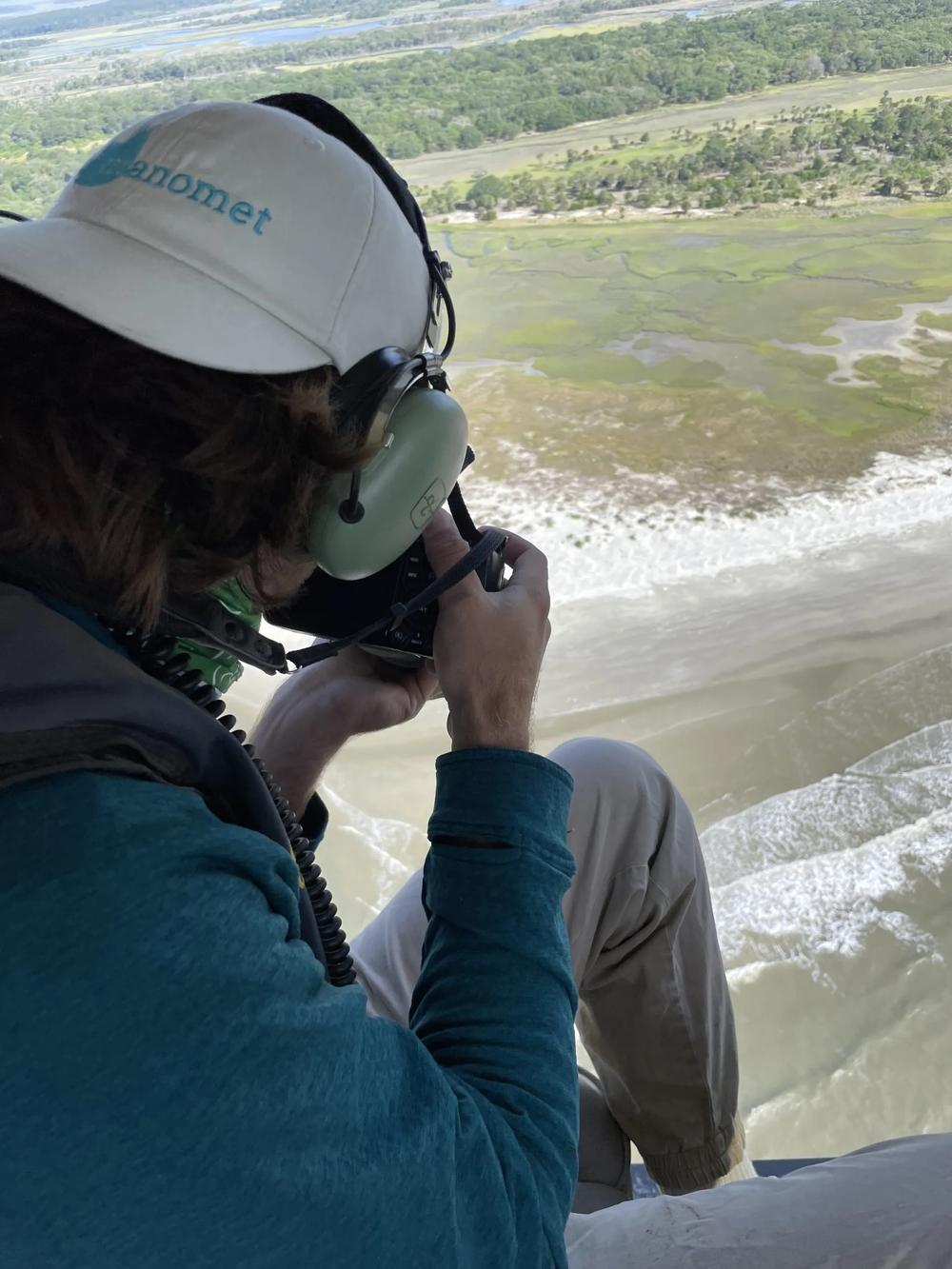
Caption
Working from a helicopter, Shorebird Technician Sam Murray photographs red knots on Ossabaw Island.
Credit: Mary Landers / The Current

Working from a helicopter, Shorebird Technician Sam Murray photographs red knots on Ossabaw Island.
Mary Landers, The Current
Perched in the front seat of the DNR helicopter about 300 feet above the south end of Sea Island, biologist Fletcher Smith spied the first flock of the birds he’d come out to count on this Monday morning in May.
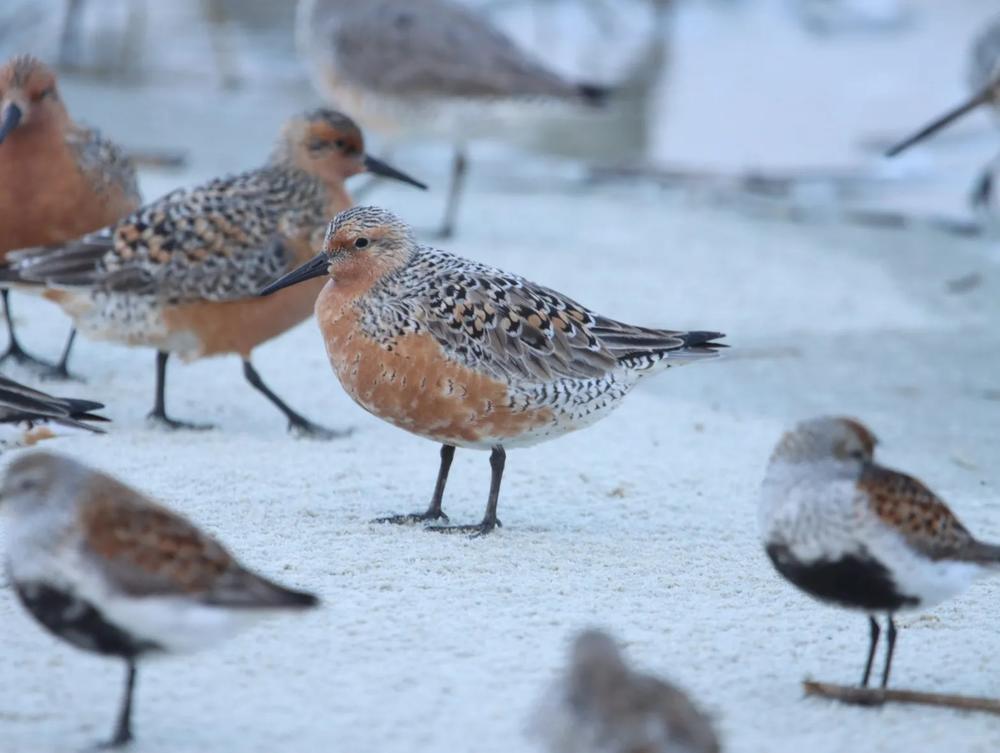
Red knots fatten up on Georgia beaches before migrating north to the Arctic to raise young.
“That was in the neighborhood of 2,000 red knots,” he said. “It’s the first time we’ve ever had so many on Sea Island.”
Behind Smith, Shorebird Tech Sam Murray slid open the helicopter door and photographed the birds to verify the count.
The flight will document the number of red knots in Coastal Georgia this spring. Once thought of as an important refueling stop on the red knots’ long distance migration to the Arctic, Georgia’s 100-mile coast has become even more significant for these birds with the understanding that most of them don’t stop again before they nest and raise their young above the Hudson Bay.
That marathon flight requires the robin-sized birds to bulk up to make it in one go. They get noticeably fatter as they prepare to migrate.
Researchers used to believe the Delaware Bay, between Delaware and New Jersey, was the biggest key to red knot success. They thought that all the red knots stopped there to feed.
“But now we know that that’s not the case,” Smith said. Red knots don’t all overwinter or stop off in Georgia, but most of the ones that do leave on a nonstop flight north. “They’re leaving (Georgia) and going straight to the Arctic region,” Smith said. “Seventy percent, or seven out of 10 that we’ve seen. It’s counter to what everybody thought. Everybody thought that all the birds went to the Delaware Bay.”
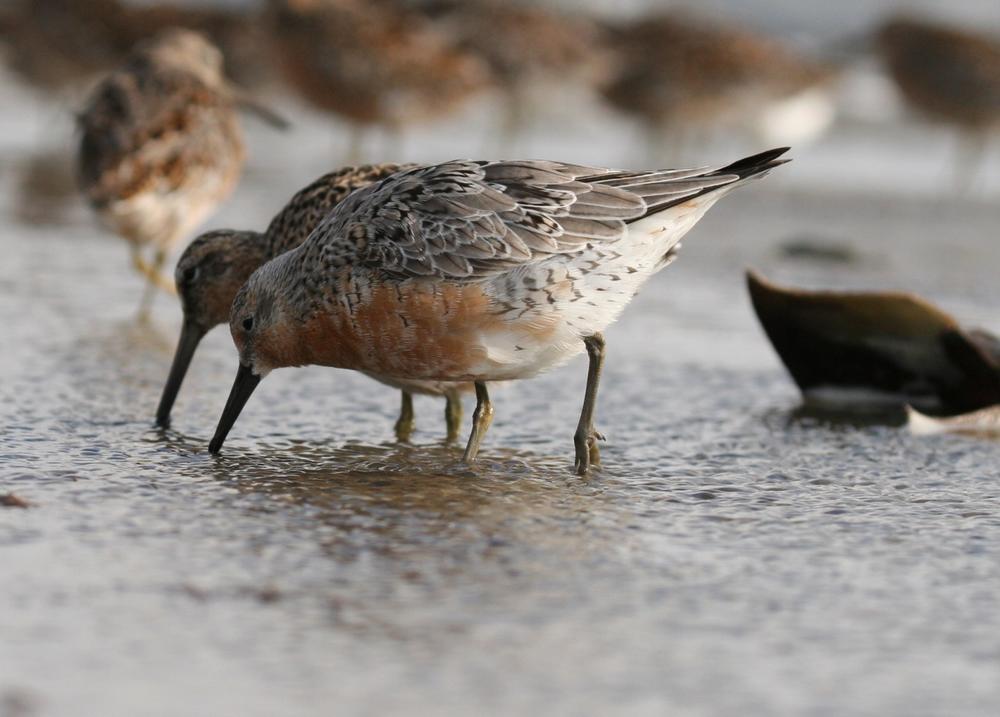
Red knots feeding.
Red knots are a threatened species under the Endangered Species Act. The U.S. Fish & Wildlife Service is seeking to expand the area considered “critical habitat” for these birds, including the addition of two areas Smith’s research suggested: Cockspur Island and Daymark Island beaches near the mouth of the Savannah River in Chatham County.
The early May helicopter survey began in St. Simons and took the researchers up to Hilton Head to count these 8-inch-long, ruddy breasted shorebirds. Some of them overwinter here and other overwinter as far south as Chile and Argentina, but they stop in Coastal Georgia on what can be as much as a 9,300 mile migration to the Arctic.
Smith knows at a glance if the specks on the sand are red knots. He automatically rules out any birds that flash white breast feathers.
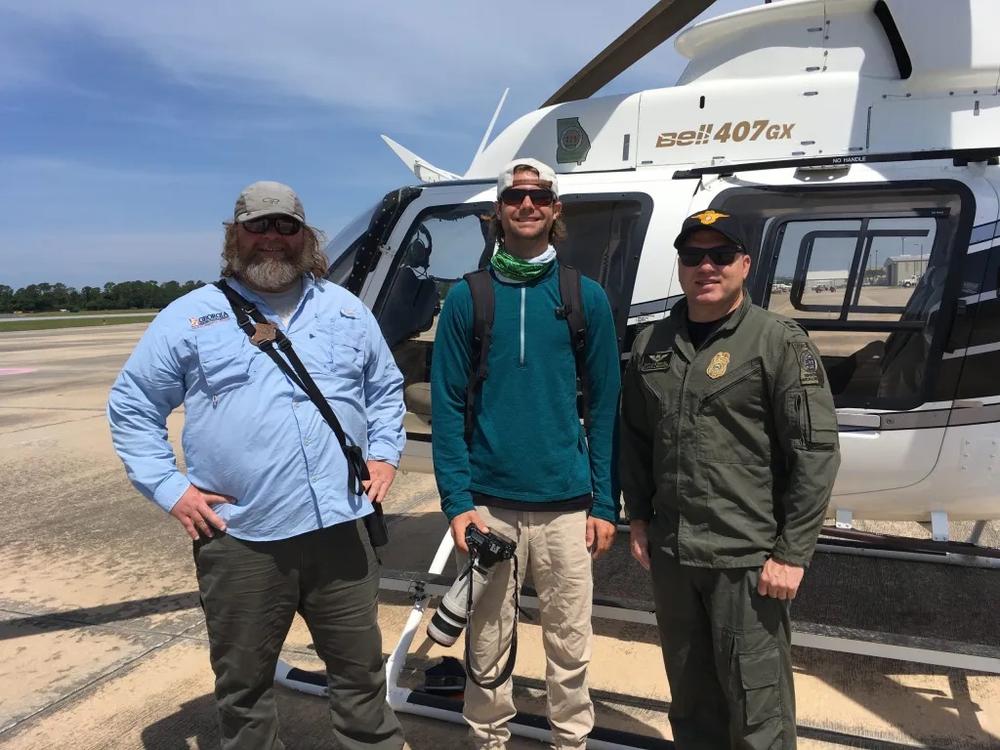
From left, DNR Wildlife Biologist Fletcher Smith, Shorebird Tech Sam Murray of the shorebird conservation group Manomet, and DNR Capt. Jaye Bridwell
The red knots surprised Smith on the survey, not feeding in places he expected them, but turning up in some less likely spots. Equally surprising was their food. Smith expected the red knots to be gorging on horseshoe crab eggs in preparation for their long-distance flight to the Arctic where they lay their eggs. But the horseshoe crabs weren’t spawning yet. Smith blamed the colder than normal water temperatures for a late spawn.
Instead of horseshoe crab eggs, the red knots are eating the tiny pastel-colored coquina clams that live at the water’s edge. It’s not the birds’ preference for fueling up, but the coquina will do the job, Smith said.
Continuing their survey, Smith and Murray find hundreds more red knots on St. Catherines Bar and Ossabaw. Then Ogeechee Bar yields another big flock of 2,000. There’s more up by Little Tybee. The teams counts finds close an estimated 5,840 red knots in all. Murray’s photos will be used to truth that number.
“We’ll go back through with a computer and dot out every red knot,” Smith said.
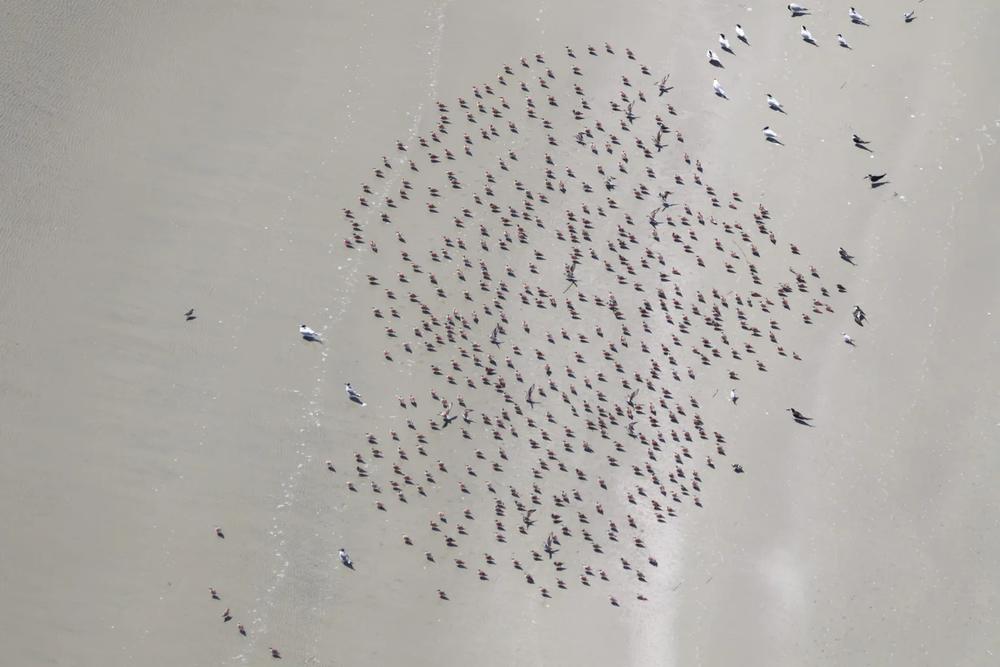
DNR researchers photograph red knots from the air then use a computer program to put a red dot on each bird and count the dots.
Other helicopter surveys from collaborating agencies farther north will help stitch together a more complete picture of the overall red knot population. There are an estimated 42,000 rufa red knot, the subspecies that migrates along the East Coast.
The helicopter survey makes the work efficient. Doing the same survey by boat would take more than a week, Smith said.
“If you wanted to do it all in one day, it would probably take 10 boats and 20 people, and access to vehicles on every island.”
This story comes to GPB through a reporting partnership with The Current.